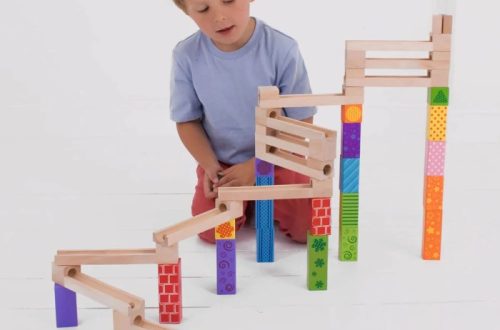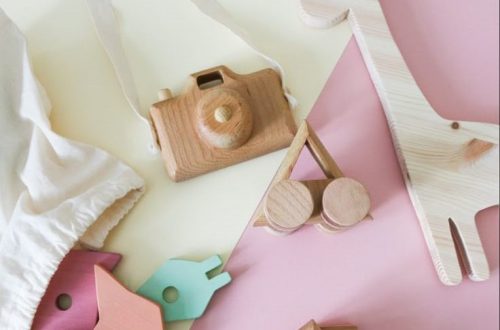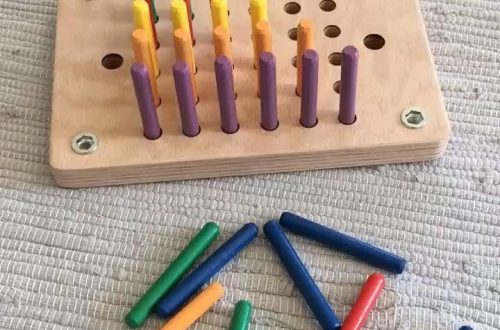Why Montessori Learning Toys Are Essential for Early Childhood Development
Montessori learning toys are more than just simple playthings—they are carefully designed tools that promote independent thinking, fine motor skills, and cognitive growth in young children. Rooted in the Montessori philosophy developed by Dr. Maria Montessori, these toys emphasize self-directed, hands-on learning that encourages curiosity and problem-solving from an early age.
One of the key strengths of Montessori learning toys is their focus on real-life experiences. Unlike many electronic or flashy toys, Montessori-style toys often mimic daily tasks like sorting, pouring, stacking, or matching. These activities help children develop coordination, concentration, and a sense of order. This approach aligns with the Montessori belief that children learn best when they are actively engaged in meaningful work.
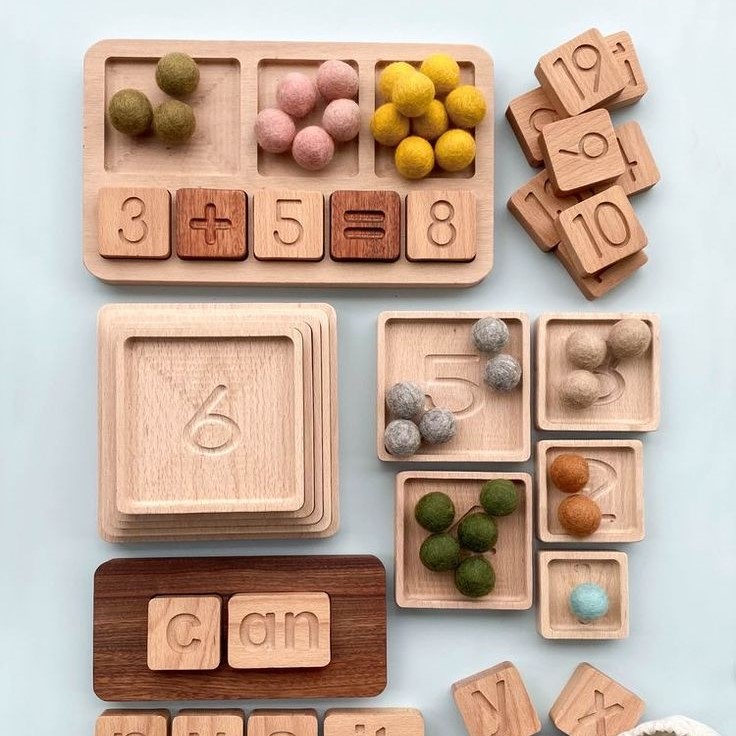
Another benefit is the emphasis on open-ended play. A single Montessori learning toy can be used in multiple ways as a child grows, making it both versatile and long-lasting. Whether it’s a set of wooden blocks, shape sorters, or tactile puzzles, each toy supports different developmental stages without losing its value over time.
Additionally, these toys are typically made from natural materials like wood, which are durable, safe, and eco-friendly. With increasing awareness around sustainability and screen-free play, Montessori learning toys have become a popular choice among parents who want to support healthy development without sacrificing safety or environmental responsibility.
In short, Montessori learning toys provide a powerful foundation for early learning, helping children build confidence, independence, and a love for discovery through play.
Key Benefits
Using Montessori learning toys offers a wide range of developmental advantages that support early childhood growth. These benefits extend beyond basic entertainment, making them valuable tools for learning and skill-building.
One major benefit is improved fine motor skills. Many Montessori learning toys require precise hand movements such as grasping, twisting, fitting, or sorting. These actions help strengthen small muscles in the hands and fingers, preparing children for writing, drawing, and other essential life skills.
Another advantage is enhanced concentration and focus. Because Montessori toys are intentionally simple and free from digital distractions, they allow children to engage deeply with each activity. As children explore, repeat, and refine their actions, they naturally develop longer attention spans and better mental stamina.
Cognitive development also receives a boost. These toys often involve patterns, sequences, or matching exercises that introduce foundational math, science, and logic concepts in an intuitive way. Sorting colored beads teaches categorization, while nesting cups introduce size comparison and spatial awareness.
Emotionally, Montessori learning toys foster independence and self-confidence. Since children can manipulate the toys independently, they experience success through trial and error. This process builds resilience and a sense of accomplishment that motivates further learning.
Social skills also improve. Many Montessori toys invite cooperative play. Building with wooden blocks or completing a puzzle together introduces teamwork, communication, and turn-taking—important skills for future social interactions.
Lastly, these toys support language development. As children describe what they’re doing, ask questions, or explain their actions, caregivers can naturally expand vocabulary and sentence structure.
By blending fun with functional learning, Montessori learning toys create a rich environment where children thrive cognitively, physically, and emotionally.
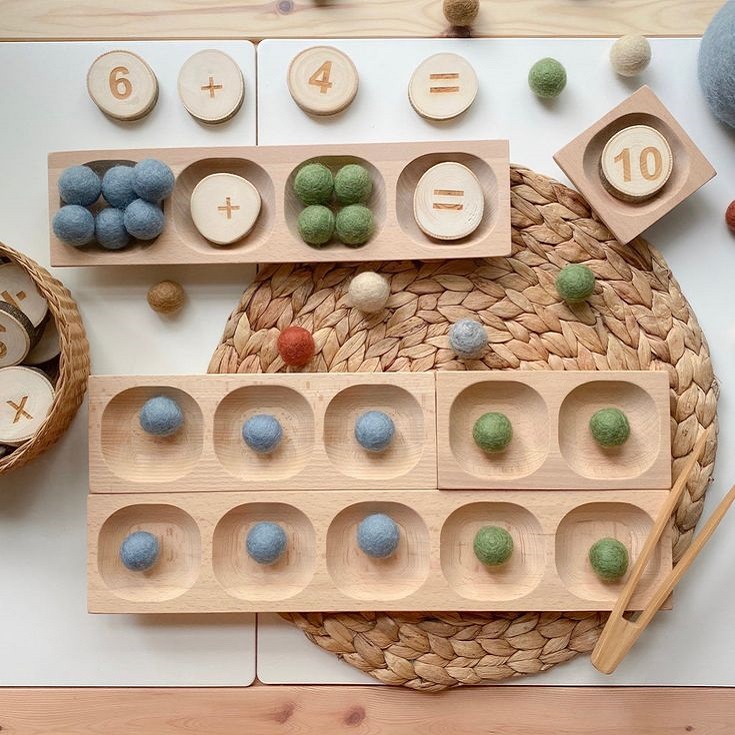
How Montessori Learning Toys Support Different Areas of Child Development
Montessori learning toys are uniquely designed to support various areas of child development. Each toy targets specific skills that contribute to a well-rounded foundation for learning and growth. Understanding these connections helps parents make informed choices when selecting toys for their child.
One area that benefits greatly is physical development. Fine motor skills are strengthened through activities like threading beads, placing pegs into holes, or using tweezers to pick up small objects. Gross motor skills are also supported with larger toys such as balance boards, push carts, and climbing frames. These activities help build strength, coordination, and body control.
In terms of cognitive development, Montessori toys encourage logical thinking, memory, and problem-solving. Activities like matching shapes, sorting colors, or assembling puzzles require reasoning and decision-making. The concept of “control of error” built into many Montessori materials allows children to recognize mistakes and correct them independently, reinforcing critical thinking.
Sensory development is another key focus. Many Montessori learning toys incorporate different textures, temperatures, and weights to stimulate the senses. Wooden blocks with varied finishes, sandpaper letters, or sound cylinders all provide tactile, auditory, or visual stimulation that enhances sensory processing.
Language development is also encouraged through these toys. As children interact with materials like picture cards, letter tracing boards, or storytelling kits, they begin to connect words with objects and actions. Adults can enhance this process by narrating play sessions and asking open-ended questions that promote verbal expression.
Social and emotional development is nurtured through cooperative play. While many Montessori toys designe for individual exploration, others—such as building sets or kitchen role-play items—invite interaction with peers or caregivers. These shared experiences help children learn patience, empathy, and teamwork.
Through this holistic approach, Montessori learning toys offer a balanced way to support every stage of early development.
Popular Types
There are several categories of Montessori learning toys, each designed to target specific developmental goals. Choosing the right type ensures your child gets the most out of their playtime while staying engaged and challenged.
1. Practical Life Tools – These toys mimic everyday tasks like pouring, spooning, buttoning, and sweeping. They help children develop fine motor skills, coordination, and independence. Examples include wooden spoons, child-sized brooms, and dressing frames with zippers, buttons, and buckles.
2. Sensorial Materials – Designed to sharpen the five senses, these toys help children classify information through sight, touch, sound, taste, and smell. Common examples include color tablets for matching shades, textured boards for touch discrimination, and sound boxes that differ slightly in tone.
3. Math-Based Toys – Montessori math materials introduce numbers and quantities in a concrete, tactile way. Number rods, sandpaper numerals, and bead chains help children grasp mathematical concepts through hands-on manipulation rather than abstract memorization.
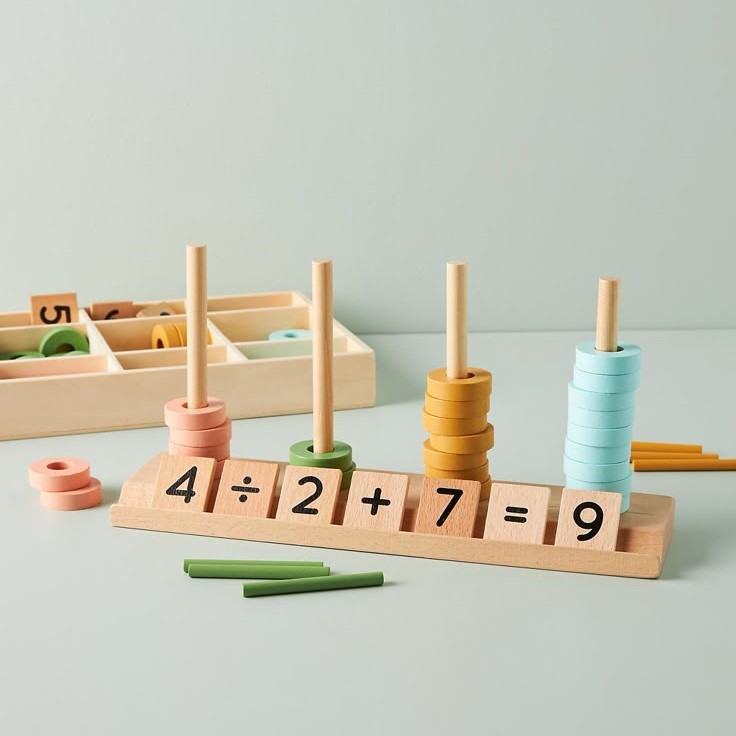
4. Language and Literacy Tools – These toys introduce letter recognition, phonics, and early reading skills. Sandpaper letters, movable alphabet sets, and phonetic object boxes help children associate sounds with symbols in a multi-sensory way.
5. Cultural and Science Exploration Kits – These toys expose children to geography, biology, and physical science through tangible experiences. Puzzles of continents, plant and animal models, and weather charts help build early knowledge of the world around them.
6. Creative and Imaginative Play Sets – While Montessori emphasizes structured learning, imaginative play is also encouraged through open-ended materials. Dollhouses, pretend kitchens, and wooden figurines inspire storytelling and role-playing that reinforce language and social skills.
Each category of Montessori learning toys plays a vital role in shaping a child’s understanding of themselves and the world, making them essential tools for early education.
How to Choose Age-Appropriate Montessori Learning Toys
Selecting the right Montessori learning toys involves more than just picking something visually appealing. It requires matching the toy to your child’s developmental stage and interests. Here are some guidelines to help you make the best choices based on age and learning needs.
For infants (0–12 months), look for toys that stimulate the senses and support early motor skills. Soft grasping rings, rattles, and textured balls help develop hand-eye coordination and sensory awareness. Simple cause-and-effect toys like wooden mobiles or stacking cups introduce early cognitive development.
For toddlers (1–3 years), focus on toys that build independence and coordination. Practical life tools like wooden ladles, bowls, and scoops allow toddlers to practice real-life skills. Shape sorters, nesting cups, and pull-along animals encourage problem-solving and gross motor development.
For preschoolers (3–6 years), choose toys that introduce early literacy, numeracy, and creative thinking. Letter and number puzzles, counting rods, and pattern blocks help with academic concepts. Open-ended materials like building blocks, art supplies, and pretend play sets encourage imagination and advanced problem-solving.
When choosing a toy, always check for safety features. Ensure there are no sharp edges, loose parts, or toxic finishes—especially for younger children. Look for smooth, natural materials like solid wood or cotton fabrics.
Also, consider open-ended play potential. The best Montessori learning toys can be used in multiple ways, adapting as your child grows. A set of wooden blocks can evolve from simple stacking to complex construction projects over time.
By aligning toys with your child’s developmental stage, you ensure they receive the most benefit from each play session.
Where to Buy High-Quality Montessori Toys
Finding high-quality Montessori learning toys requires knowing where to shop. Whether you prefer online retailers or local stores, here are some trusted sources that offer authentic, educational, and durable options.
1. Amazon – One of the largest online marketplaces, Amazon carries a wide variety of Montessori learning toys from trusted brands. You’ll find classic Montessori materials like shape sorters, sensory bins, and practical life tools. Customer reviews help guide purchasing decisions, and Prime shipping ensures fast delivery for last-minute needs.
2. Melissa & Doug – Known for its commitment to quality and child development, Melissa & Doug offers a broad selection of Montessori learning toys. Their wooden puzzles, play kitchens, and sorting trays encourage hands-on learning and creativity.
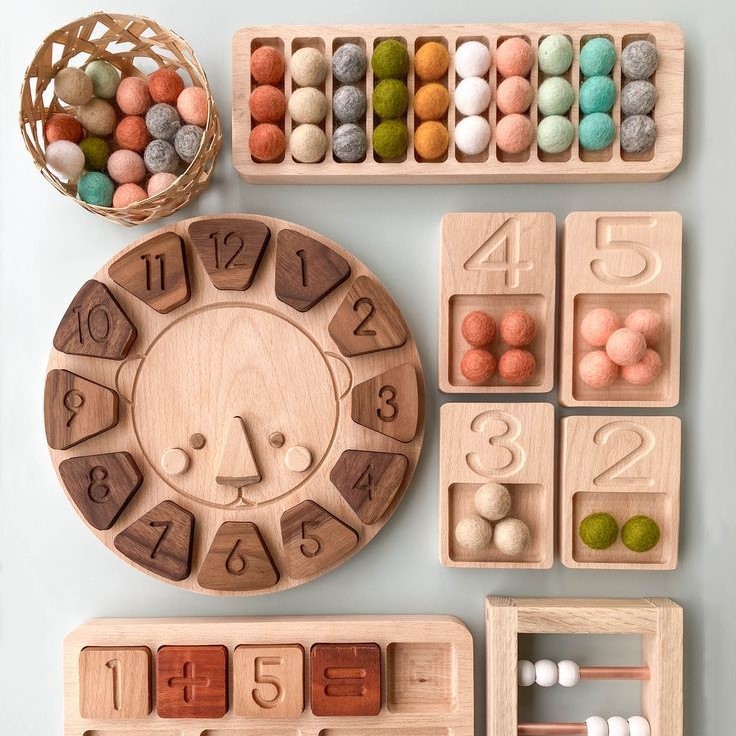
3. Hape Toys – Hape specializes in eco-friendly Montessori learning toys made from sustainable bamboo and other renewable resources. Their products are known for being safe, durable, and aligned with Montessori principles. From wooden puzzles to interactive learning panels, Hape offers a wide range of developmentally appropriate toys.
4. Etsy – For handmade or small-batch Montessori learning toys, Etsy is a go-to platform. Independent sellers create custom pieces with organic finishes, unique designs, and personalized touches. While prices may vary, the craftsmanship is often superior, making them perfect for those who value sustainability and originality.
How to Integrate Montessori Toys Into Daily Routines
Bringing Montessori learning toys into your child’s daily routine doesn’t have to be complicated. In fact, integrating them into everyday life can enhance learning while promoting independence and responsibility. Here are some effective strategies to make the most of these educational tools.
Start by creating a dedicated learning space. Set up a low shelf or table where your child can easily access their favorite Montessori learning toys. Keep only a few toys visible at a time to avoid overwhelming them. Rotate the toys every few weeks to maintain interest and introduce new challenges.
Next, incorporate learning into household tasks. Use practical life tools like wooden spoons, small pitchers, or cloth-wrapped brushes during cleaning or cooking time. Letting your child pour water into a bowl or dust furniture with a mini duster gives them a sense of responsibility while developing motor skills.
Encourage structured yet flexible play sessions. Set aside time each day for focused interaction with Montessori learning toys, but allow your child to choose which one they want to explore. Observe how they engage with the toy and offer gentle guidance only when needed.
Use descriptive language during play. Talk about what your child is doing to help them build vocabulary and comprehension. For example, say, “You’re putting the red ring on top,” to introduce color, size, and sequencing concepts in a natural way.
Teach self-care and clean-up habits. Montessori learning includes taking care of materials. Encourage your child to return each toy to its designated spot after playing. This builds organization skills and reinforces a sense of order.
Common Mistakes
Even the best Montessori learning toys can lose their effectiveness if not used correctly. Many parents make common mistakes that affect their child’s learning experience. Being aware of these errors ensures a more fulfilling and educational playtime.
One frequent mistake is choosing toys that are too advanced. Just because a toy looks educational doesn’t mean it’s suitable for your child’s current stage. Always match the complexity of the toy to your child’s developmental level. A 2-year-old won’t benefit from a complex wooden puzzle meant for a 5-year-old.
Another common error is overloading the play area. Too many toys can overwhelm young minds and reduce focus. Montessori learning thrives on simplicity and intentionality, so limit the number of available toys to five or fewer at any given time. Rotate them regularly to keep things fresh without causing confusion.
Many parents also underestimate the importance of unstructured play. While it’s tempting to guide your child’s play, Montessori learning relies on self-directed exploration. Let your child engage with the toy in their own way instead of showing them exactly how to use it every time. This fosters independence and creativity.
Some parents focus too much on appearance. While beautiful wooden toys are appealing, function should always come first. Prioritize toys that promote real learning and development rather than those that simply look attractive on a shelf.
Another oversight is not checking for safety standards. Even though wood is a durable material, poorly finished or painted toys can splinter or chip. Always inspect toys for rough edges, non-toxic finishes, and secure joints before giving them to your child.
How to Care for and Maintain Montessori Toys
Proper maintenance of Montessori learning toys extends their lifespan and keeps them safe and engaging for long-term use. Since many of these toys are made from natural materials like wood, fabric, or metal, following a few simple care steps ensures they remain in excellent condition for years.
Begin by cleaning regularly with natural solutions. Wipe wooden toys with a damp cloth and mild soap. Avoid harsh chemicals or excessive moisture, as they can damage the finish or warp the wood. For disinfecting, mix equal parts water and white vinegar, then wipe and air dry.
Store toys properly to prevent wear and tear. Keep them in a dry, well-ventilated space. Avoid leaving them in direct sunlight or humid environments like bathrooms or basements. Dust them occasionally to keep them looking fresh and ready for play.
If the wood becomes dry or dull, apply food-grade mineral oil or beeswax polish. This restores shine and protects against wear. Apply sparingly using a soft cloth and let it absorb overnight before wiping off excess.
Avoid exposing toys to extreme temperatures. Never leave them near heaters, fireplaces, or outdoors in wet conditions. Sudden changes in temperature and moisture can cause warping, splitting, or mold growth.
If a toy gets damaged, repair it promptly. Fix loose parts with child-safe glue or sand down rough edges with fine-grit sandpaper. Replace broken components to maintain safety and functionality.
Teach your child to respect and care for their toys. Encourage gentle handling and proper storage after playtime. This instills responsibility and helps preserve the toys for future use.
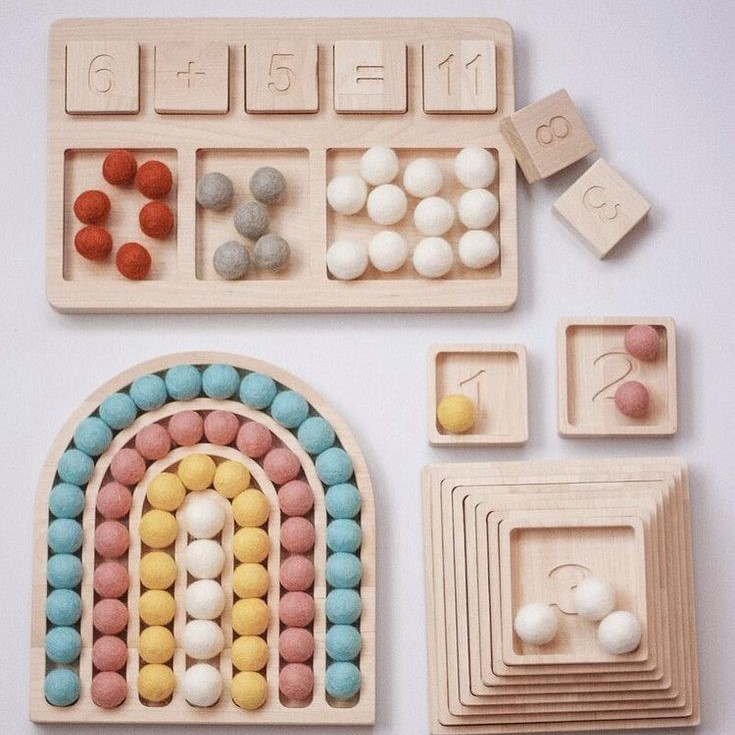
With regular care, Montessori learning toys remain a lasting investment that supports learning and development across multiple stages of growth.
Final Thoughts
Choosing the right Montessori learning toys is more than just a shopping decision—it’s about creating a learning environment that nurtures curiosity, independence, and joy. These toys are thoughtfully designed to support a child’s natural development, offering meaningful play that evolves with their growing skills and interests.
From improving fine motor skills to encouraging problem-solving and logical thinking, Montessori learning toys cover a wide range of developmental milestones. Their open-ended nature allows for repeated use, making them a smart investment that grows with your child. Whether it’s sorting shapes, tracing letters, or practicing daily life skills, each toy serves a purpose in early education.
As you select toys, remember to match them to your child’s current stage of development. Focus on quality over quantity, and give your child the space to explore and learn at their own pace. By modeling calm, focused play and supporting independent discovery, you help your child build confidence and a love for learning.
With proper care and thoughtful introduction, Montessori learning toys become more than just playthings—they become powerful tools for lifelong learning and growth.


